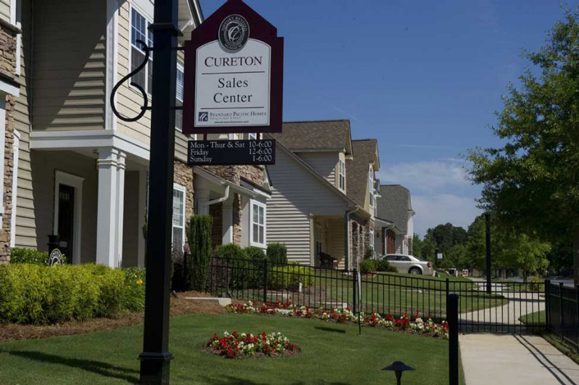Census 2010: North Carolina is 6th-fastest growing in U.S.

An examination of the Census 2010 data released so far provides several insights into how North Carolina’s growth compared to other states. North Carolina was the 6th fastest-growing state in the 2000s at 18.5%, putting it just between Texas and Georgia, and virtually tied with Georgia in growth since the 1990s. That level of growth was enough to move North Carolina from the 11th to the 10th most populous state by 2010.
North Carolina’s 18.5% growth for the decade was nearly double the nation’s but still reflects a slowdown from the previous decade’s growth of 21.4%. The U.S. overall population growth was also somewhat slower in the 2000s than it had been in the 1990s (U.S. population slowed from 13.2% in the 1990s to 9.7% in the 2000s).
 The growth in North Carolina in the 2000s also occurred in a more uneven pattern, with much of the highest population growth focused on the Charlotte and Raleigh regions. There were also more counties that experienced a loss in population during the 2000s than was the case in the 1990s, (seven in 2010 compared to three in 2010, all but one located in the eastern part of the state).
The growth in North Carolina in the 2000s also occurred in a more uneven pattern, with much of the highest population growth focused on the Charlotte and Raleigh regions. There were also more counties that experienced a loss in population during the 2000s than was the case in the 1990s, (seven in 2010 compared to three in 2010, all but one located in the eastern part of the state).
The changes in youth population in the state also occurred in an uneven pattern in the decade. Again, Charlotte and Raleigh were centers of growing youth populations, but large numbers of counties, especially in the northeastern part of the state, experienced a loss in youth compared to a decade ago.
The smaller suburban towns in the Charlotte Region experienced some of the fastest growth in the state. Union County, the fastest growing county during the decade (at over 60%) was home to Indian Trail, which was the 9th fastest growing city in the nation (of cities with 2000 population of 10,000 or more).
Hispanic population in the state more than doubled over the decade, making North Carolina 6th in the nation in Hispanic population growth. The greatest percentage of Hispanic growth occurred in and around major metropolitan areas and in the rural southwestern mountains and coastal counties. Half of all Latinos in the state live in 9 metro counties. One quarter live in Mecklenburg and Wake counties (Charlotte and Raleigh’s counties).
 Other trends in population diversity since 2000 included a noticeable pattern of increased suburban racial diversity. Several areas around the state showed stronger African-American population growth in suburban towns compared to larger cities. Another significant finding was that half of the state’s ten largest cities are now “majority minority” (minorities defined as all groups excluding Non-Hispanic whites). This is up from just two of those ten largest cities being classified as such in the 2000 Census.
Other trends in population diversity since 2000 included a noticeable pattern of increased suburban racial diversity. Several areas around the state showed stronger African-American population growth in suburban towns compared to larger cities. Another significant finding was that half of the state’s ten largest cities are now “majority minority” (minorities defined as all groups excluding Non-Hispanic whites). This is up from just two of those ten largest cities being classified as such in the 2000 Census.
The preliminary data released by the U.S. Census Bureau in February of this year give counts of the total and voting age population as well as breakdowns by race and Hispanic origin. More detailed data were just released for North Carolina and other states. To view data (http://factfinder2.census.gov/faces/nav/jsf/pages/index.xhtml)
Click here to see a presentation that highlights the trends mentioned here as well as other trends for North Carolina in the last decade with maps, tables and graphs.
— Laura Simmons and John Chesser
Photograph by Nancy Pierce